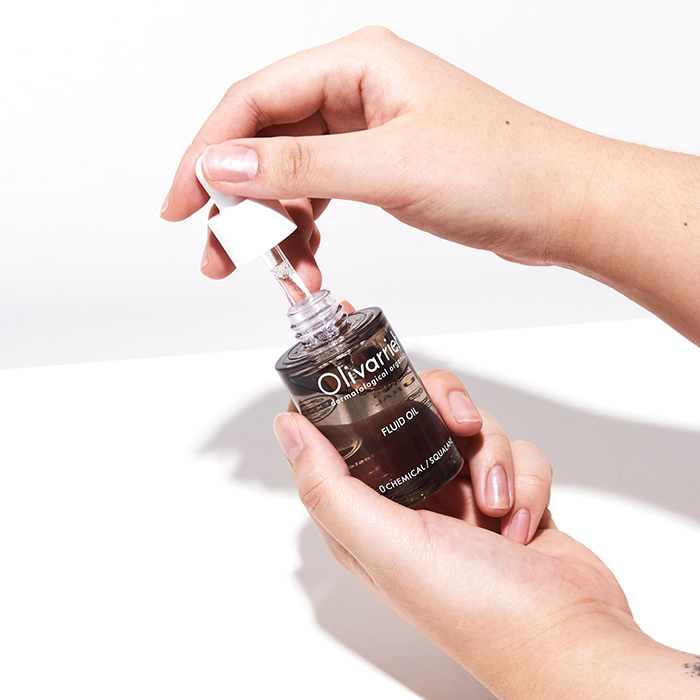Suddenly, the ingredient squalane seems to be everywhere in skin care. Or is it squalene? Read on below to find out whether this buzzy oil belongs in your skin care routine.
Though squalane has been on the skin care market for many years, it hasn’t always received a ton of attention. If you haven’t already noticed it slowly permeate shelves, you’ll find the superstar ingredient featured in products of top-selling brands, including The Ordinary, Biossance, Drunk Elephant, and Tatcha. Squalane is also becoming increasingly more commonplace as a hero in various Korean skincare products, which we’ll talk about below. Today we’re also discussing what squalane is, how it’s derived, and how it should be used.
Squalane Vs. Squalene
If you’re paying attention, you’ve probably seen this ingredient spelled as “squalene” instead of “squalane.” Squalane is a hydrogenated version of squalene, and is therefore a more stable version of the molecule. The two words are sometimes used interchangeably, but you will almost always find that squalane is on the ingredient list, even if squalene is in the title or description.
What Is Squalane?
“There are two different types of squalane: one that is derived from shark liver oil, and one derived from olives [and other plants],” explains esthetician Gina Mari. Mari advises using plant-derived squalane since it’s more ethically extracted. That’s not hard to do considering plant-based squalane is much more commonly used these days and most brands will explicitly mention the source right on the packaging.
It may surprise you to hear that squalene is naturally produced by humans, as well, and is found in our sebum (yep, the oily stuff that you often see accruing on your face). Sounds kind of icky, but sebum plays a vital role in the health of your skin by keeping it moisturized and balanced, and by promoting elasticity. We’re born with squalene in our skin when we’re babies, but unfortunately, by the time we reach our 20s, it’s all gone.
“Incorporating this emollient ingredient into your nightly [regimen] will prevent moisture loss and boost cell regeneration,” notes Mari. “It’s wonderfully soothing for sensitive, chapped, or irritated skin.”
Squalane also allows other ingredients to absorb and penetrate more efficiently into the skin. At the end of the day, squalane makes for a more radiant, youthful face.
How and When to Apply Squalane
Now that you know what squalane is, let’s discuss how to use it.
This ingredient can be found either in pure form, or as an ingredient within a list of ingredients. In its pure form, apply a couple drops directly to your face following cleansing, toning, active ingredient treatments, and serums. You can also incorporate a couple drops into your go-to serum or cream.
If squalane is one ingredient in a list of many, follow the usage directions on the product.
Squalane is generally lightweight and only slightly comedogenic, but if you’re concerned about breakouts, Mari says, “make sure you do a test spot before slathering it all over your face.”
Product Recommendations
As mentioned, squalane is popping up in K-beauty ingredient lists more and more regularly.
The Olivarrier Fluid Oil is 100% olive-derived squalane oil. The formula feels light yet packs a punch when it comes to strengthening the skin barrier, preventing moisture loss, and giving skin a healthy glow.
The ingredient helps seal in moisture provided by hydrolyzed collagen and hyaluronic acid in the Dr. Althea Squalane Silk Mask essence.
Then, the new Then I Met You Birch Milk Refining Toner uses squalane to promote cell renewal and to help improve the absorption of the formula’s other, more concentrated ingredients.
Ed note: All of the products mentioned above use plant-based squalane.
